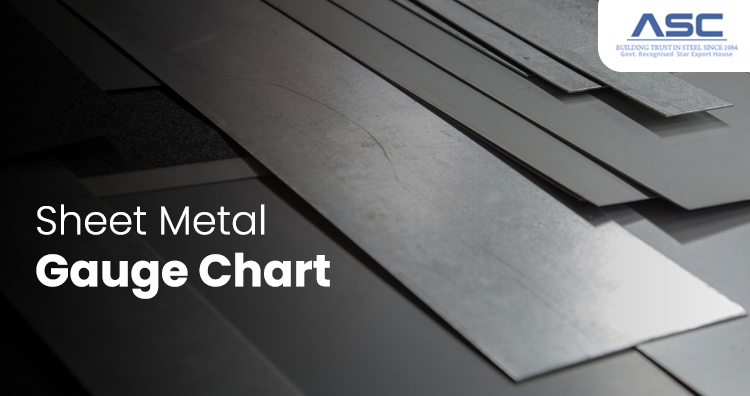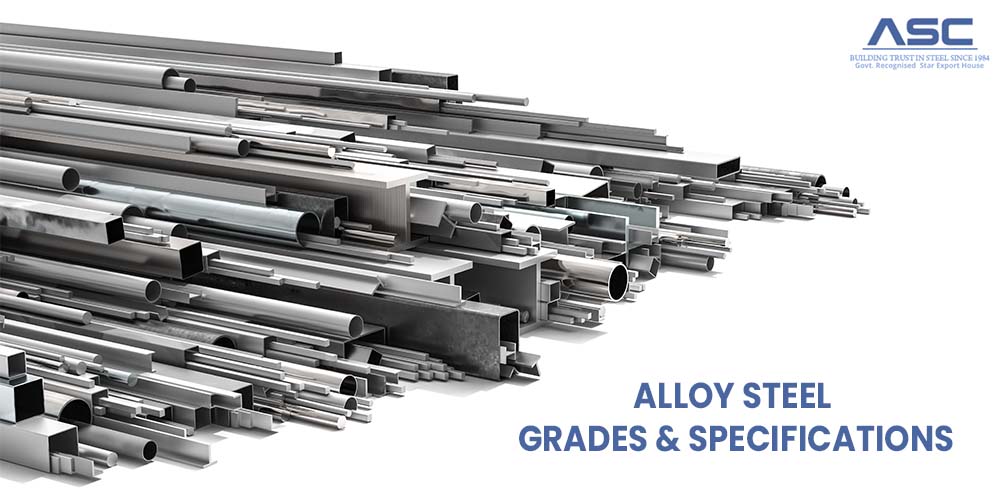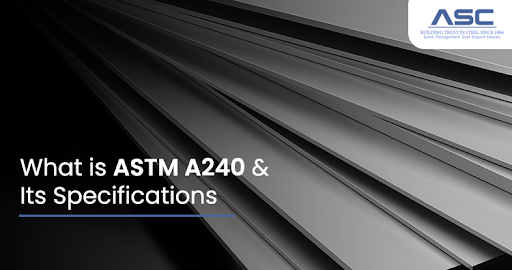What is Low Alloy Steel - Properties, Uses, Grades & Composition
by AMC
Posted on December 20, 2022 at 0:05 PM

What is Low Alloy Steel?
Low-alloy steel is a type of metal created by mixing steel with small amounts of other metals like chromium, molybdenum, or nickel. These alloying elements, typically between 1% and 5%, improve the steel's strength, corrosion resistance, and durability. This makes low alloy steel material ideal for demanding applications in harsh environments.
What is low alloy steel used for? Insights from Amardeep Steel
Low-alloy steels are commonly used to make pipes, car and jet engine bodies, rail lines, and structural engineering plates for both onshore and offshore use. Because it is resistant to corrosion, high-strength low-alloy steel is used in these places. Less than 10% of the alloying elements are usually found in low alloy steels (C, Mn, Cr, Ni, Mo, V and Si combined). When making steel, it is very important to do elemental analysis quickly and accurately. It is not only needed to meet quality standards, but it also helps the steel producer save money in a market that is becoming more competitive.
Amardeep Steel offers the Low Alloy Steel (LAS) package for the sequential and simultaneous XRF spectrometers Zetium and Axios FAST to address the needs of the steel industry for fast and flexible analysis. This solution is based on more than 90 certified reference materials (CRMs) that cover up to 21 different elements and 4 monitor samples to correct for drift and sample preparation.
High-strength, low-alloy (HSLA) steel is a type of low-alloy steel that is different from other low-alloy grades because it was made to meet specific mechanical needs rather than a certain chemical composition. Some things that use HSLA are warships, structural steel, and other strong things.
ASTM A514, A517, and T1 steels are quenched and tempered to make them strong, tough at low temperatures, and pliable. They are used to make things like heavy equipment and boilers and pressure vessels.
Some alloys are used in weathering steels like ASTM A242, A588, and A709 Grade 50W to make a protective layer that doesn't rust. This layer also gives the finished steel a weathered look. It was first sold as COR-TEN®. Weathered steel is often used in art, on bridges, and on the outside of buildings to get a certain look.
Low Alloy Steel Properties
1. Strength
The yield stress of steel is a measure of how much stress it can take without changing shape. The least amount of stress that carbon steel can handle is 235MPa. And 345MPa is the value for low alloy steel. When you compare two kinds of steel, you can shrink the steel and make it lighter. But there is one thing to think about: if the steel will bend while it is being used, it needs to be worked on to improve its properties. Sometimes it is used instead of carbon steel, but the cross-section size stays the same. This is done to get a stronger material without making it heavier.
The most recent way to get it is to use critical annealing and fast cooling. This kind of it is good at making shapes. The yield stress is between 310 and 345 MPa.
2. Welding Properties
Welding is a big part of making steel. The steel must get proper welding properties. If the welding process is done well, most low-alloy steel can be welded well. But if it has a lot of carbon and manganese, it needs to be heated or a low-hydrogen electrode needs to be used. Some low alloy steel must use a hydrogen-free electrode, no matter how thick it is.
3. Corrosion Resistance
When you use high strength low alloy steel, the requirements are high strength, and the cross-section will be smaller. That will make it lighter, and the price-to-performance ratio will be better. But we need to pay attention to how well it doesn't rust. If the steel's cross-section isn't as thick, corrosion resistance is more important. The erosion-resistant coating was spread on the surface of the steel to make it resistant to corrosion.
Some low-alloy steel is very good at not getting rusty. And copper, phosphorus, silicon, chromium, nickel, and molybdenum can make things less likely to rust.
Low Alloy Steel Composition
Low alloy steel composition mainly includes iron along with small amounts of chromium, molybdenum, nickel, and manganese. These elements improve the steel's strength, toughness, and resistance to wear and rust. Understanding the composition helps in selecting the right steel grade.
| Tab 1 Nominal compositions of some bearing steels | |||||||
|---|---|---|---|---|---|---|---|
| Sl. No. | Grade | Nominal compositions, % | |||||
| Carbon | Manganese | Silicon | Chromium | Nickel | Molybdenum | ||
| High carbon bearing steels | |||||||
| 1 | AISI 52100 | 1.04 | 0.35 | 0.25 | 1.45 | ||
| 2 | ASTM A 485-1 | 0.97 | 1.10 | 0.60 | 1.05 | ||
| 3 | ASTM A 485-3 | 1.02 | 0.78 | 0.22 | 1.30 | 0.25 | |
| 4 | TBS-9 | 0.95 | 0.65 | 0.22 | 0.50 | 0.25 maximum | 0.12 |
| 5 | SUJ 1 | 1.02 | Less than 0.50 | 0.25 | 1.05 | Less than 0.25 | Less than 0.08 |
| 6 | 105Cr6 | 0.97 | 0.32 | 0.25 | 1,52 | ||
| Carburizing bearing steels | |||||||
| 1 | 4118 | 0.20 | 0.80 | 0.22 | 0.50 | 0.11 | |
| 2 | 5120 | 0.20 | 0.80 | 0.22 | 0.80 | ||
| 3 | 8620 | 0.20 | 0.80 | 0.22 | 0.50 | 0.55 | 0.20 |
| 4 | 4620 | 0.20 | 0.55 | 0.22 | 1.82 | 0.25 | |
| 5 | 4320 | 0.20 | 0.55 | 0.22 | 0.50 | 1.82 | 0.25 |
| 6 | 3310 | 0.1 | 0.52 | 0.22 | 1.57 | 3.50 | |
| 7 | SCM420 | 0.20 | 0.72 | 0.25 | 1.05 | 0.22 | |
| 8 | 20MnCr5 | 0.17-0.22 | 1.1-1.4 | 0.4 maximum | 1.0-1.3 | ||
Low Alloy Steel Grades
Some of the most common low alloy steel grades are 4130, 4140, 4340, and 8620. Grade 4130 is widely used in the aerospace industry due to its strength and lightweight properties. Grade 4140, a chromium-molybdenum steel, is commonly used in manufacturing large equipment like cranes, gears, and turbines because of its excellent durability and toughness.
| Steel category | ASTM / ASME standard | |||
|---|---|---|---|---|
| Low Alloy Steel Plate | Low Alloy Steel Pipe | SMAW Electrode/ Rod | Flux Cored Wires | |
| 0.5%Mo | A204 Grade A,B,C A336 Grade F1 | A209 Grade T1 A335 Grade P1 | GL76/78A1 | GMX 811A1 |
| 0.5%Cr-0.5%Mo | A387 Grade 2 CI.1,2 | A213 Grade T2 A335 Grade P2 | GL86/88B1 | |
| 1.25%Cr-0.5%Mo | A387 Grade 12 Cl.1,2 A387 Grade 11 CI.1,2 A336 Grade F11 | A213 Grade T11, 12 A335 Grade P11, 12 A182 Grade F11 | GL86/88B2 | GMX 811B2 |
| 2.25%Cr-1.0%Mo | A387 Grade 22 CI.1,2 A336 Grade F22 | A213 Grade T22 A335 Grade P22 A182 Grade F22 | GL86/88B3 | GMX 911B3 |
| 5.0%Cr-0.5%Mo | A387 Grade 5 CI.1,2 | A335 Grade P5 | GL86/88B6 | |
| 9.0%Cr-1.0%Mo | A387 Grade 9 CI.1,2 | A335 Grade P9 | GL86/88B8 | |
Advantages of Low Alloy Steels
- High yield strength
- Able to withstand high temperatures
- Good creep strength
- Oxidation resistance
- Hydrogen resistance
- Low temperature ductility
Low Alloy Steel Applications
Applications for low-alloy steels varies from military vehicles, oil drilling platforms, pressure vessels and pipes, earthmoving and construction equipment, and structural steel. Low-alloy steels, like HY 80, HY 90, and HY 100 steels, are used to make submarines, bridges, ship hulls, and off-road vehicles, among other things. It has nickel, molybdenum, and chromium in it, which makes it easier to weld, stronger, and harder to cut. Most of the time, preheating and postheating are not needed to weld low-alloy steels.
Low Alloy Steel Suppliers
Amardeep Steel is a trusted supplier of high-quality low alloy steel for different industries. With years of experience, we offer strong and reliable steel solutions to meet your needs. Reach out to us today to learn more about our range of low alloy steel grades and find the right material for your project.
FAQs
1. What is low-alloy steel material?
Low-alloy steels are defined as a type of steel with a total alloying element content larger than that in carbon steel but smaller than 5% mass fraction. From: Case Studies of Material Corrosion Prevention for Oil and Gas Valves, 2022.
2. What are the 4 grades of low-alloy steel?
Some of the most common types of alloy steel grades include 4130, 4140, 4340, and 8620. 4130 is a low-alloy steel that is common in the aerospace industry.
3. What is the difference between low alloy steel and mild steel?
Mild steel is a type of low-alloy steel. Low alloy steels contain more carbon than other types of steel and have various advantages depending on their intended application.

Sheet Metal Gauge Chart
When working with sheet metal, the term "gauge" is commonly used to describe the thickness or thickness range of the material. However, those unfamiliar with the gauge

